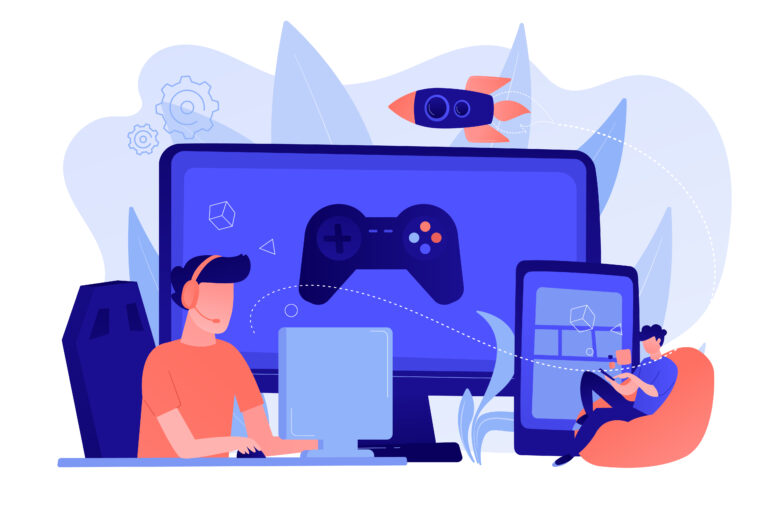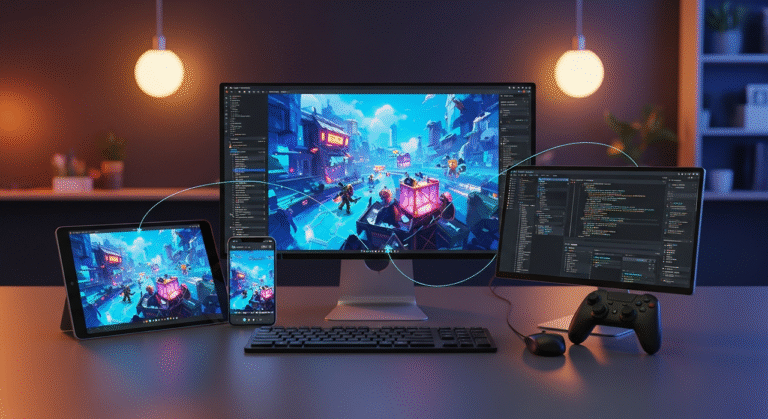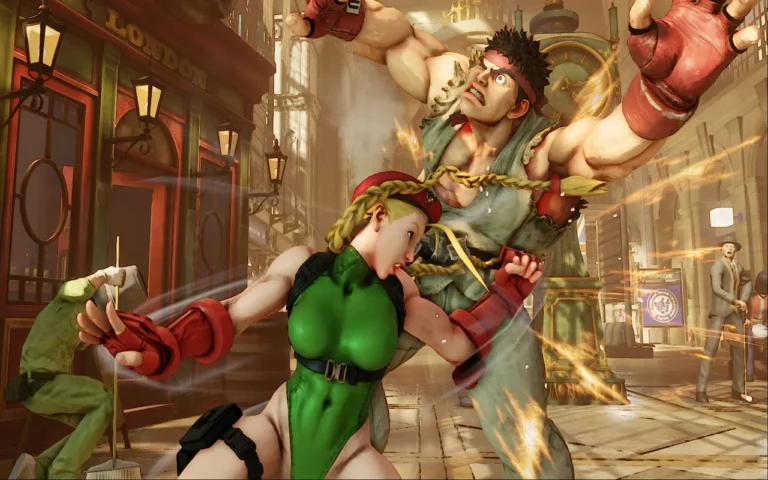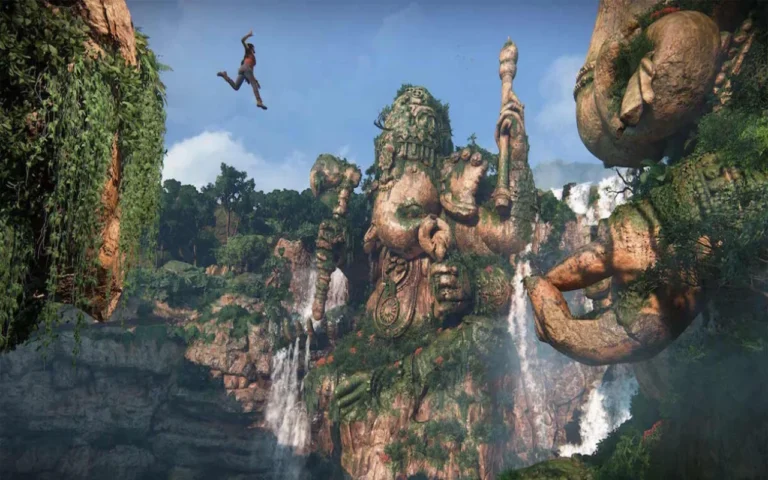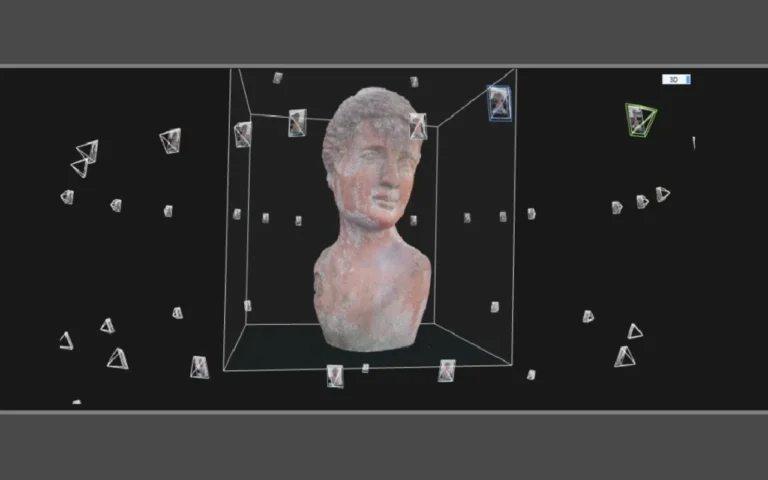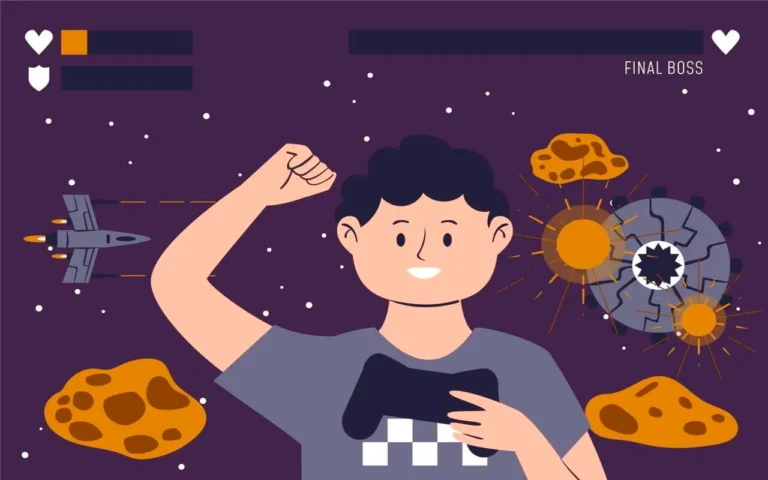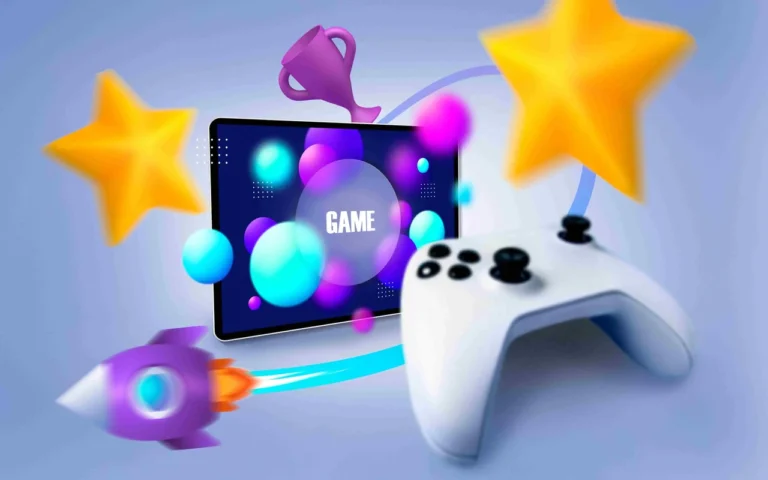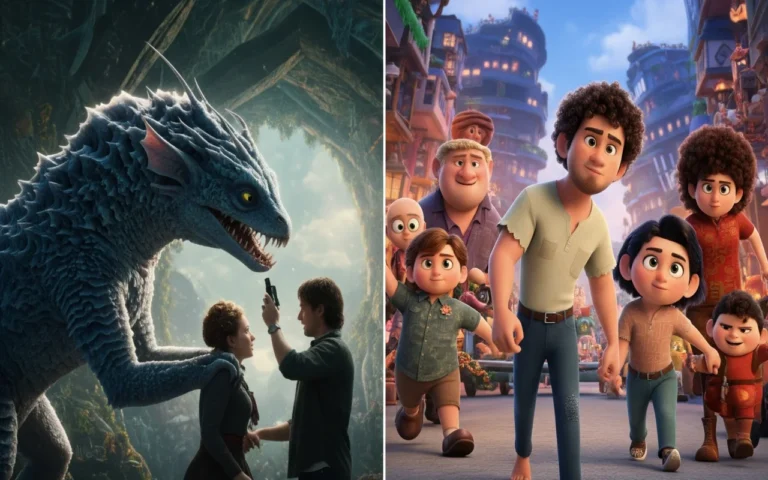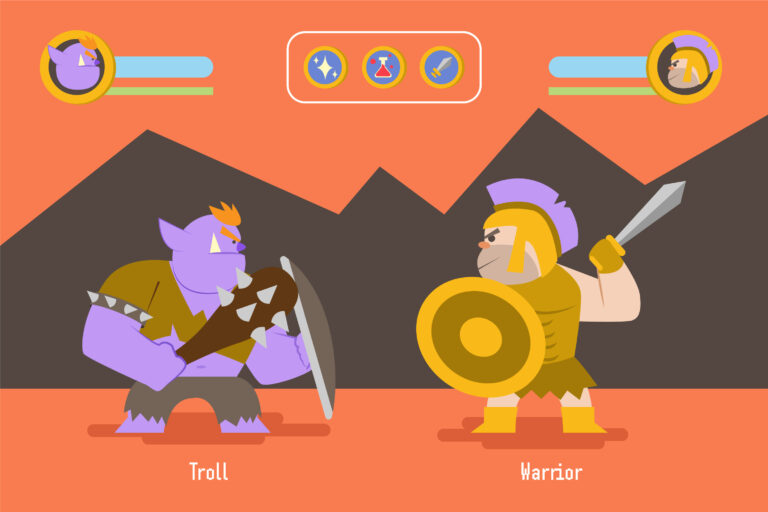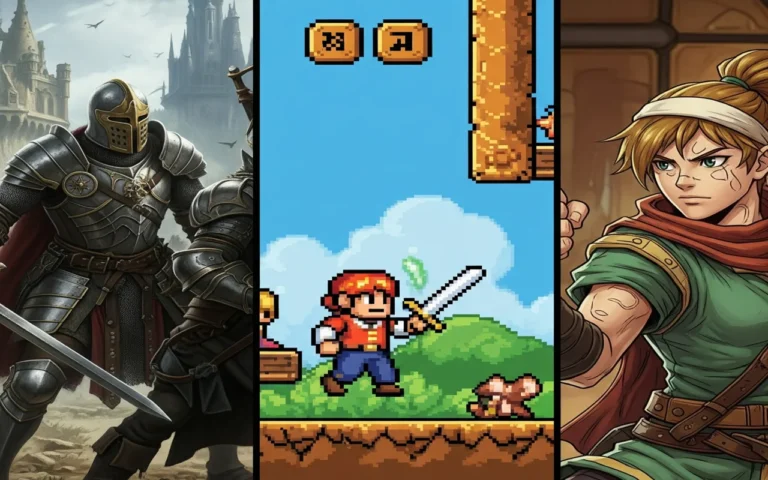Indie developers are reshaping the artistic landscape of video games, driving innovation without the weight of big budgets or industry limitations.
Unlike larger studios, which often follow predictable aesthetic paths to meet commercial demands, indie creators can explore unconventional visual designs.
Their freedom to experiment leads to games that offer players genuinely unique and immersive experiences.
This ability to stand out with fresh, visually engaging content allows indie games to captivate audiences in an increasingly crowded market.
Exploring indie game art styles reveals a rich tapestry of visual creativity. Each style not only reflects the developers’ artistic vision but also plays a crucial role in shaping the player’s experience.
Pixune’s game art studio offers the nostalgic charm of hand-drawn illustrations and sleek minimalism of geometric shapes of Indie game art styles as their testament to the diverse approaches to crafting compelling and memorable gaming experiences.
This expansive exploration into the world of indie game art will delve into the appeal of these styles, the various approaches developers take, and how these styles impact the overall game experience.


Need Game Art Services?
Visit our Game Art Service page to see how we can help bring your ideas to life!
What Is The Appeal of Indie Game Art?
The allure of indie game art comes from its ability to stand out, creating a distinct visual signature. While mainstream games often stick to well-established norms to cater to broad audiences, indie titles thrive on experimentation and creative risk-taking.
This creative freedom empowers developers to embed personal and distinctive elements into their work, creating art that strikes a more profound emotional chord with players.
As one of the unique game art styles, the hallmark of indie game art lies in its authenticity and unique vision.
Developers often approach their work with a passion for creativity rather than commercial success, leading to visually striking games that push the boundaries of traditional aesthetics.
This authenticity is not just skin-deep but crucial in deepening storytelling and emotional immersion. By creating personal and unique art, indie developers expose gamers to memorable and powerful experiences.
The Popular Indie Game Art Styles
The indie gaming scene bursts with various art styles, each adding its distinctive flair to the games that capture players’ imaginations.
Here, we will take a closer look at some of these art styles:
Hand-Drawn Art Styles:
Hand-drawn art styles celebrate the beauty of traditional illustration techniques, bringing a timeless quality to indie games. This method involves crafting detailed drawings by hand before digitizing and animating them, resulting in rich, textured visuals. Hand-drawn art offers a warmth and charm often missing in more polished, computer-generated graphics.
It allows for a level of detail and personalization that can significantly enhance the game’s atmosphere and storytelling.
Games like Hollow Knight exemplify the beauty of hand-drawn art. The game’s developers carefully crafted the environment and characters, creating a visually stunning world that feels personal and artistic.
The hand-drawn art style contributes to the game’s gothic and mysterious atmosphere, drawing players into its dark, immersive world.
Similarly, Cuphead takes hand-drawn art to new heights by emulating the visual style of 1930s animation. This style creates a visually striking and historically rich experience by honoring the early days of animation. The game’s art style is integral to its identity, offering a one-of-a-kind and engaging visual experience that sets it apart from other titles.
Low-Poly and Minimalist Art:
Characterized by simplicity and geometric focus, low-poly and minimalist art styles embrace a charmingly straightforward aesthetic.
Low-poly art reduces the number of polygons used in 3D models, resulting in a blocky yet charming visual style. This approach not only streamlines the development process but also evokes a sense of nostalgia for early 3D games. The low-poly style can create a distinctive visual identity that sets a game apart from more detailed and realistic graphics.
By its nature, Minimalist art focuses on simplicity, stripping away visual elements to their essence. It produces clean, straightforward visuals using a restricted color palette and basic shapes.
Minimalist art can be particularly influential in games focusing on accessibility and charm.
For example, Stardew Valley employs a minimalist art style to create a charming, approachable aesthetic that complements its gameplay mechanics. The game’s simple, pixelated graphics enhance its nostalgic feel and engaging experience.
Hyper Light Drifter utilizes minimalist design to create a visually striking impact. The game’s bold, simplified graphics emphasize mood and atmosphere, creating a unique and immersive experience. The minimalist art style complements the game’s fast-paced, action-driven gameplay by emphasizing essential visual elements and fostering a visually cohesive world.
Vector and Flat Art Styles:
Known for their crisp lines, bold colors, and simple shapes, vector and flat art styles offer a distinctive visual appeal.
Utilizing mathematical equations, vector art creates scalable graphics that remain sharp and clear at any size. This style is often used to achieve modern, visually appealing aesthetics with precision and clarity. This style is usually chosen for its contemporary, visually appealing look, which provides accuracy and consistency in design and makes it particularly appealing to indie developers.
With its focus on minimalism and lack of depth, flat art showcases vibrant, two-dimensional visuals. This style creates straightforward, striking graphics that are visually engaging and easy to interpret. Games like Super Meat Boy and Katana ZERO leverage vector and flat art to deliver polished and memorable visuals. These games’ clean, sharp design elements enhance their overall aesthetic and contribute to a contemporary look that complements their gameplay.
Stylized 3D Art:
Stylized 3D art blends the depth and complexity of three-dimensional modeling with artistic exaggeration. This style moves away from hyper-realism, opting for unique shapes, vibrant colors, and imaginative forms.
Stylized 3D art allows developers to create visually stunning, playful, and immersive worlds. By embracing artistic expression over realism, stylized 3D art adds depth and engagement to the gaming experience.
Games like Journey use stylized 3D art to craft breathtaking environments that evoke a sense of wonder and exploration. The game’s unique visual style enhances its narrative and emotional impact, creating a memorable and immersive experience.
LittleBigPlanet employs stylised 3D to create a whimsical and inviting game world. The art style plays a crucial role in enhancing the game’s charm and creativity.
Stylized 3D art in these games demonstrates how visual design can elevate gameplay and storytelling, contributing to a rich and engaging player experience.
How Art Style Shapes Indie Game Experience
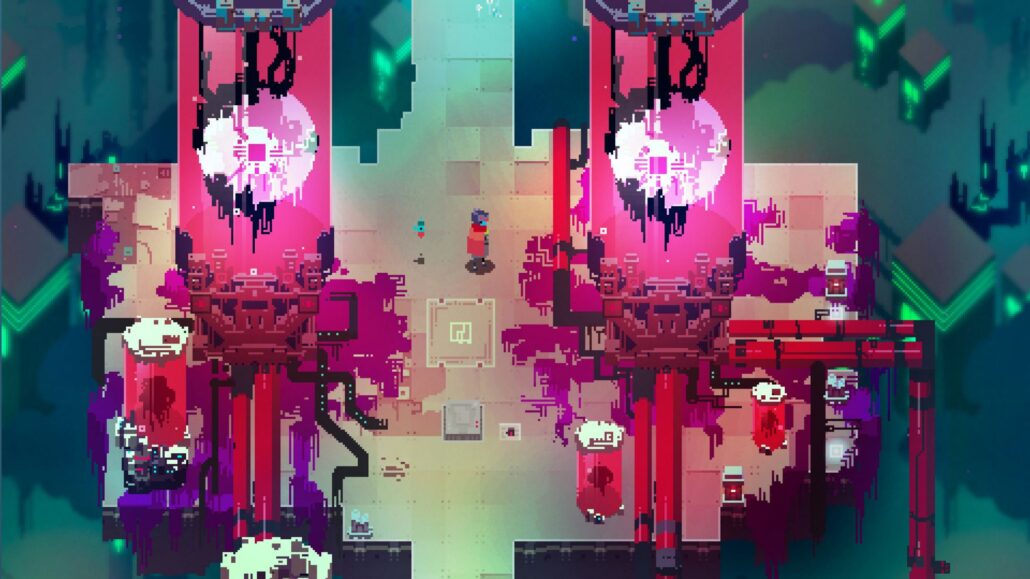
In an indie game, the art style profoundly influences the player experience, transcending simple visual appeal. It is essential in establishing the game’s atmosphere, narrative depth, and emotional connection. By harmonizing with the game’s themes and mechanics, the art enhances immersion, resulting in a cohesive and captivating experience.
For example, Gris’s lush, watercolour-inspired art style enhances the game’s grief and emotional healing exploration. The soft, flowing visuals create a serene and immersive atmosphere, drawing players into a beautifully crafted world that evolves with the protagonist’s journey. This art style not only complements the narrative but also deepens the emotional connection, allowing players to experience the story’s themes on a profound level.
The art style in an indie game is vital to delivering a memorable and significant experience. It shapes emotional resonance and player immersion, affecting how players connect with the game world. With careful consideration of their chosen art style, developers can build a game that stands out and profoundly impacts players.
The Art of Indie Gaming: Iconic Titles with Distinctive Visuals
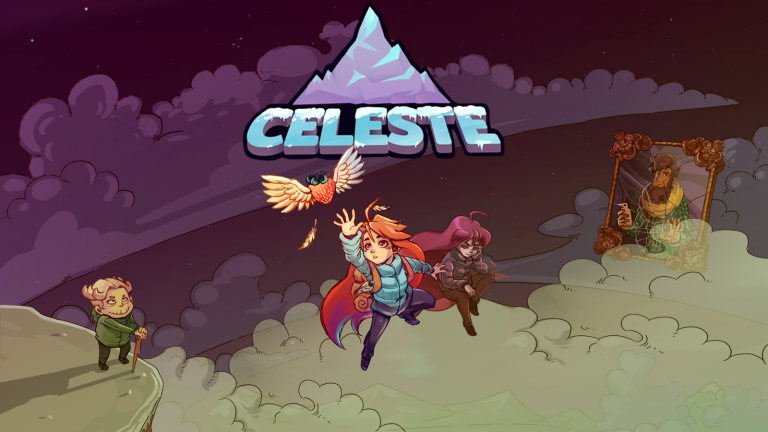
Many indie games, some of which were highlighted above, have gained remarkable success, largely thanks to their distinctive art styles, which are integral to their identity and appeal.
These examples highlight how a unique visual style and the key elements of minimalist game art can define a game’s character and enhance its success in the indie gaming arena.
Celeste is known for its striking pixel art, which elevates the game’s visual charm and underscores its messages about mental health and personal growth.
The vibrant colors and detailed animations create an engaging visual experience that amplifies the narrative.
This pixel art style harmonizes beautifully with the game’s themes and gameplay, creating a truly immersive journey for players.
Undertale features retro-inspired pixel art that elicits nostalgia while showcasing inventive gameplay and storytelling mechanics.
This art style supports the game’s unique narrative and character arcs, earning it widespread acclaim.
The pixel art enhances visual appeal while also reinforcing the emotional resonance of the game’s narrative.
These examples emphasize the impact of a distinctive art style on shaping a game’s identity and driving its success. By creating visually striking experiences, these games have differentiated themselves from mainstream offerings and effectively engaged players.
How to Choose the Right Art Style for Your Indie Game
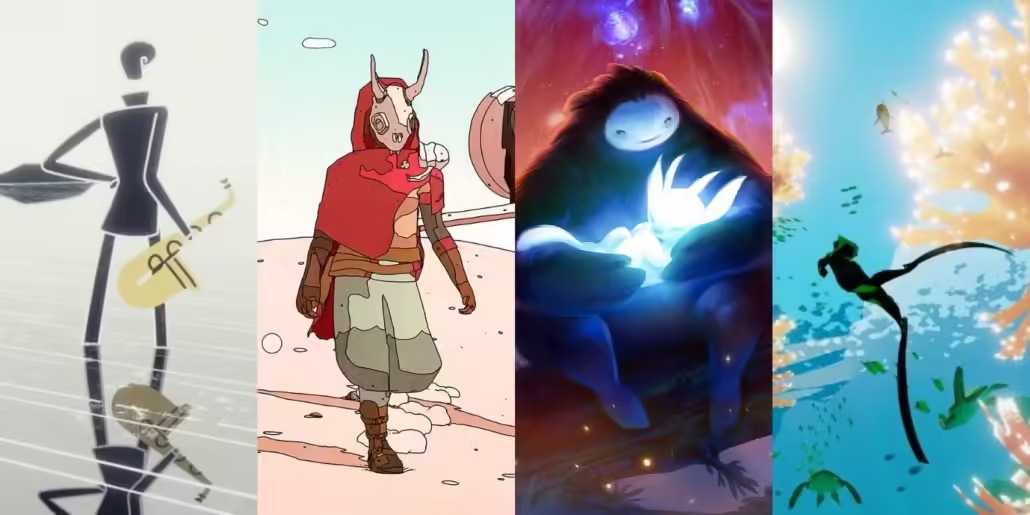
Selecting the right art style for an indie game involves carefully balancing artistic vision, thematic alignment, and practical considerations. Developers should consider the game’s narrative, target audience, and technical constraints when choosing an art style. The selected style should enhance the gameplay and storytelling, creating a visually compelling and memorable experience.
Aligning the art style with the game’s narrative and emotional goals is essential for creating a cohesive experience. The art style should support the game’s themes and mechanics, contributing to the overall immersion and engagement. Practical considerations, such as budget, resource availability, and technical constraints, must also be taken into account. Developers should experiment with different styles and prototypes to find the best fit for the game’s unique identity.
Whether you’re considering indie as your theme art style or contemplating other fields, our guide on how to choose the art style for your game can help you expand your horizons.
Thoughtful selection of an art style allows developers to create a game that captures players’ attention and resonates deeply. The chosen aesthetic should enhance the visual charm and the gameplay experience, contributing to a vibrant game world.
Emerging Trends in Indie Game Art
Emerging trends and technological advancements will likely influence indie game art’s future. As developers expand the frontiers of visual design through the best game engines, new art styles, and techniques will be introduced, providing players with an even broader spectrum of engaging experiences.
The increasing use of procedural generation and algorithmic design is likely to shape indie game art’s future.
These methods allow developers to create intricate visuals that dynamically respond to player actions and gameplay. They can construct unique, ever-changing game worlds by employing procedural generation, adding a new layer of depth and engagement to the visual landscape.
Another significant trend is the burgeoning interest in virtual and augmented reality. As VR and AR technologies become more advanced and widely accessible, indie developers will seize the opportunity to experiment with new art styles and techniques tailored to these mediums.
The immersive experience provided by VR and AR will foster more experimental and interactive visual designs, opening up exciting new possibilities for player engagement in game worlds.
The Evolution of Indie Game Art Styles
Indie game art styles have evolved significantly, reflecting the industry’s spirit of experimentation and innovation. With advancements in technology and the emergence of new development tools, indie developers are constantly exploring creative avenues in visual design. This evolution is influenced by many factors, such as progress in graphics technology, changing player tastes, and introducing contemporary artistic trends.
In their early days, indie games predominantly utilized pixel art and simplistic graphics, constrained by technical limitations and budgetary restrictions. However, as technology improved and development tools became more accessible, indie developers experimented with a broader range of art styles. The rise of digital art tools and platforms has enabled developers to create more complex and visually stunning games, expanding the possibilities for indie game art.
Shifting player preferences and cultural trends heavily shape the evolution of indie game art styles. As gamers become more sophisticated and selective, they increasingly seek titles that deliver unique and engaging visual experiences. Indie developers respond to these demands by embracing new art styles and experimenting with innovative approaches to visual design.
Final Words
The diverse art styles in indie games create unique visual experiences that set them apart from significant titles. From the nostalgic warmth of hand-drawn illustrations to the striking simplicity of minimalist designs and the imaginative creativity of stylized 3D visuals, indie developers use art to challenge creative limits and enhance gameplay. Far from being just optical amusements, these art styles significantly influence the overall player experience, affecting emotional tone and engagement.
As indie developers persist in their exploration and innovation, the art styles they craft will remain a crucial element of the gaming experience. By adopting unique and experimental visual design approaches, indie games can inspire new projects and play a significant role in the ongoing evolution of interactive art. Each indie title is a testament to the power of artistic expression in gaming, providing players with unforgettable experiences.
